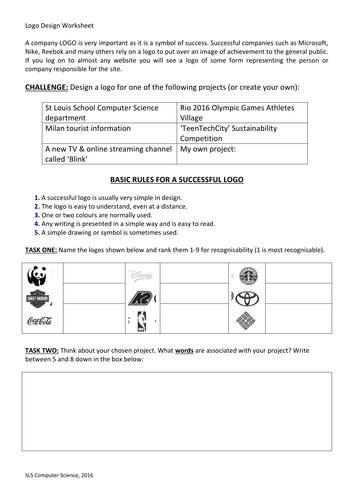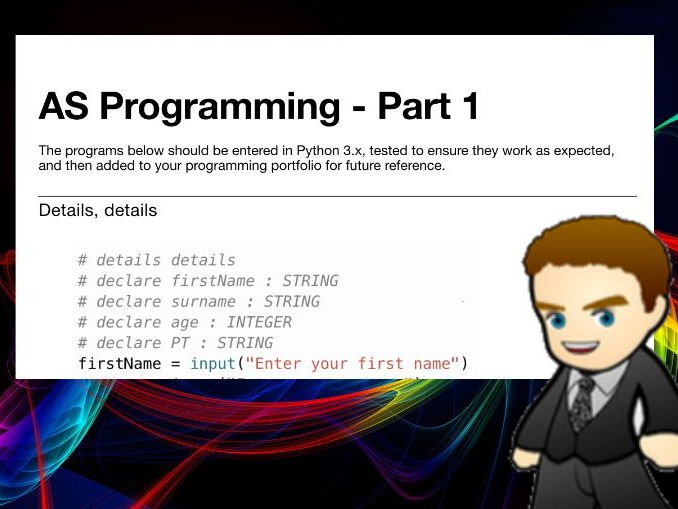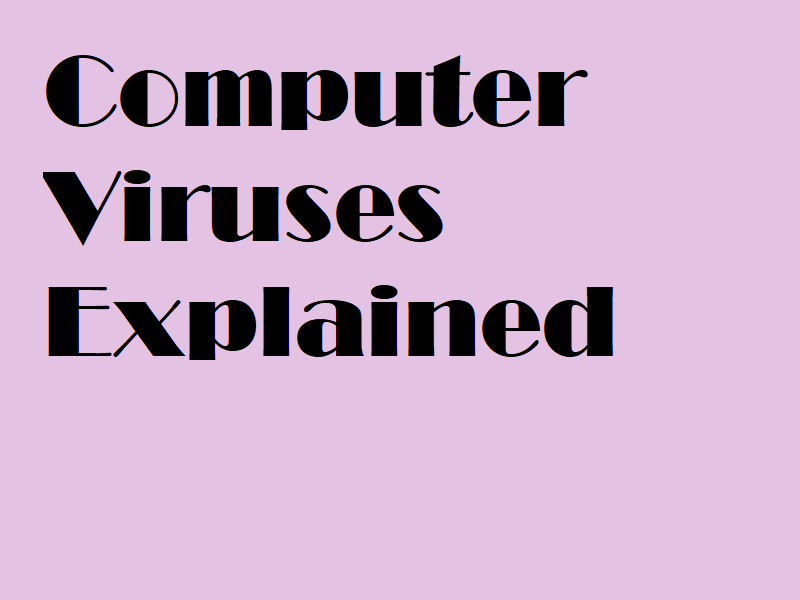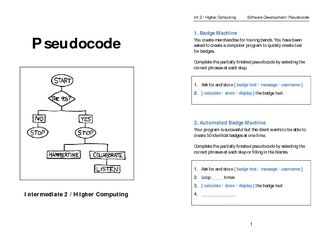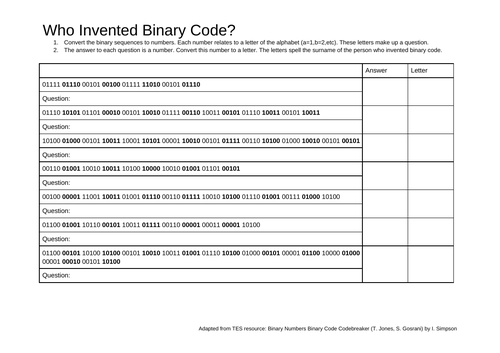
7Uploads
5k+Views
2k+Downloads
All resources

Logo Design Worksheet (Computer Science, Design and Technology)
Based upon https://www.tes.com/teaching-resource/logo-design-worksheet-6141769 with a few alterations.

AS Programming Book 1 (Python 3.x)
This workbook contains thirteen exemplar programs to be entered by the students, tested and analysed. It covers the basics of Python coding from variable types and declaration, calculation, input / output, selection statements (IF... ELSE) and iteration (FOR). It also covers two examples of user-defined module libraries which reinforces the theory eBook concepts the students have learned about in class.
I use these programs to develop student confidence in Python programming but also to develop their understanding of program design.

Computer Viruses Explained
This resource is a series of four podcasts (in MP4 and MP3 format) and accompanying transcripts which can be used by students to learn more about the following:
The different types of computer viruses
The actions that common viruses unleash on a computer system
The different forms that computer viruses can take
How you can protect your computer system from attack by viruses
This resource was originally created for the SQA Higher Computing course (Scotland) but can be used to enhance understanding in the following courses:
AP Computer Science A (Computing in Context)
IB Information Technology in a Global Society
IB Computer Science
A-Level Computer Science

BGE Computer Science: Multimedia
A student workbook and end of topic assessment that supports a six week practical and theory unit that evidences the following CfE outcomes:
TCH3-01A
I can explore and use the features of a range of digital technologies, integrated software and online resources to determine the most appropriate to solve problems.
TCH4-11A
I can extend my use of manual and digital graphic techniques to realise ideas, concepts and products and recognise the importance of real world standards
TCH4-13B
I can informally compare algorithms for correctness and efficiency.
There are eight question sets for completion in class, two homework tasks and three practical tasks. The software used/required is Sumopaint (online, all platforms), Paint.NET (free to download, Windows 10) and Pencil2D (free to download, Windows 10). The end of unit assessment is designed to be completed on paper although you could turn it into a Google / Microsoft Form for online completion if desired.

The Social Dilemma - Questions
Reflective questions for students watching the documentary The Social Dilemma.
This resource forms part of my teaching of social media literacy in the NPA Digital Passport course (level 5 and 6)
The resource includes two question sets in Word format.

Introduction to Pseudocode Task Booklet (Int 2 / Higher Computing)
This booklet scaffolds the creation of pseudocode to solve increasingly complex scenarios. It relies on the class teacher introducing the concept of pseudocode before using this booklet. The pupils should refer to the previous tasks to help them as less help is given in later tasks.

Binary Numbers Binary Code Codebreaker
This activity has been reformatted from the resource uploaded by sgosrani (https://www.tes.com/teaching-resource/binary-numbers-binary-code-codebreaker-12082318) which was itself an update of the original posted by Tristan Jones (https://www.tes.com/teaching-resource/binary-numbers-lesson-6159776).
I used this in class as an extension activity following focus on counting in eight bit binary. Students had also previously completed a caesar cipher topic.

